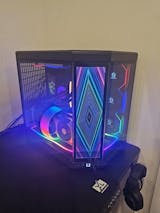Amidst the dot com boom and new programming languages, computer system suppliers were hard at work during the 1990s in order to meet the demands of the “modern” user. A lot of advances were made on the cusp of the digital age. 1995 was a busy year on its own. Microsoft® launched Windows 95, offering free Internet Explorer with every copy. Philips® and Sony® invented and developed the very first digital video disc (DVD) as a means to store any kind of digital data. Sun Microsystems introduced Java for the first time and quickly followed with JavaScript. Computing solutions allowed companies of all kinds to flourish and innovate. Yahoo became a registered domain in January, Amazon officially opened in July, and eBay launched in August. Join us as we take a trip down memory lane to compare the high-end gaming computers of today to their 1995 predecessors. Keep reading to learn more!
1995 to Now in Computing Technology
Computers have made leaps and bounds in terms of size, speed, and other metrics. We take a closer look at how hard drives, memory, monitors, sound cards, and other components compare over two decades of digital change.
Hard Drives: In 1995, most of the hard drives on the market came with 400 to 1,000 megabytes. There were three primary hard drive types, including the IDE, EIDE, and SCSI interfaces. Integrated Drive Electronics (IDE) typically tapped out at 540MB, while Extended Integrated Drive Electronics allowed 1GB and larger hard drives to be used in home computers for the first time. The first Macintosh computers featured a Small Computer System Interface (SCSI) that allowed a theoretically unlimited amount of drives to be chained together. Today, budget computers are outfitted with at least 500GB, but consumers can access up to 1TB for an affordable price, depending on quality, cache, etc.
Memory (RAM): In 1995, a standard computer came with up to 4MB of space. Today, even a budget PC comes with 8GB of space. In a nutshell, modern users have 8,000 times the capacity to quickly access applications, needed data, and operating systems. The average cost in 1995 was approximately $30 per megabyte or $30,875 per gigabyte. Now, modern consumers pay approximately $4.35 per gigabyte.
Monitors: In 1995, 14- to 15-inch home computers with Cathode Ray Tube (CTR) display were the standard. Flat screens became popular, because they nullified the glare and curved image problems found with 14-inch monitors. Today, hardcore gamers can have their pick of the litter. Most personal computers come with a 24-inch widescreen LCD or LED monitor, but curved gaming monitors are now as large as 49 inches across and counting.
In addition to hard drive, memory, and monitor upgrades, modern computers have changed drastically since 1995. Modems are obsolete, except for users who live in very rural areas. Optical disks are also obsolete because digital downloads are so prevalent. Even the way we use computers has changed drastically. In 1995, approximately 12 million people used online services. Today, there are more than three billion people who now use the internet.
As manufacturers continue to make product and service improvements, it will be surreal to examine how our current computers change over the next few decades.
Your cart is currently empty.
Start Shopping














